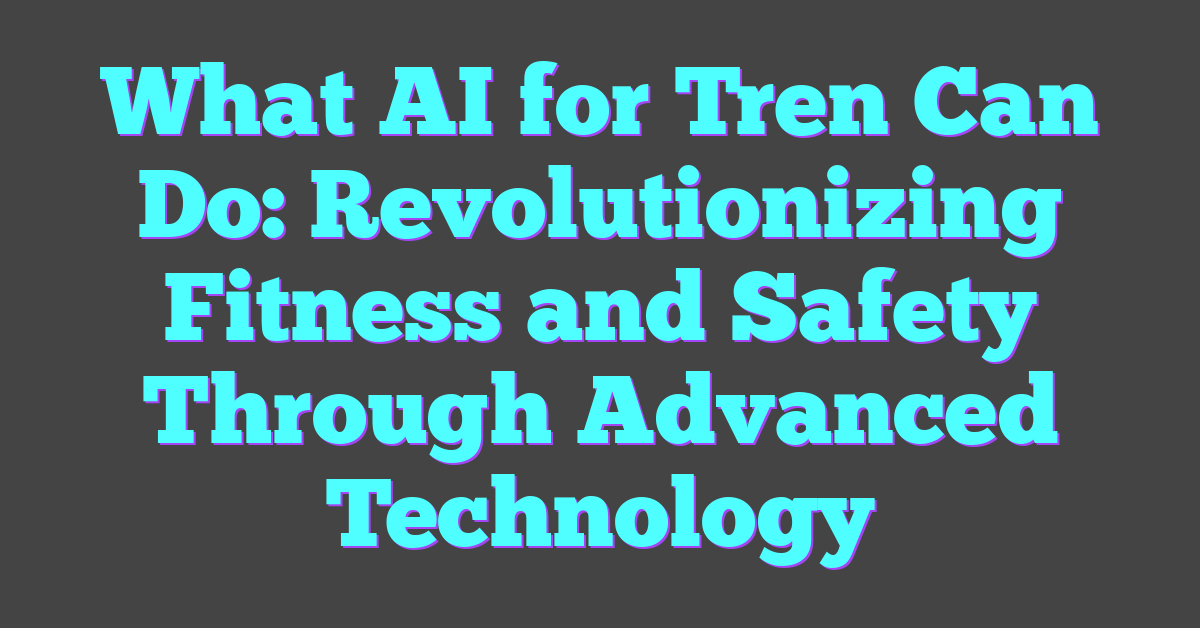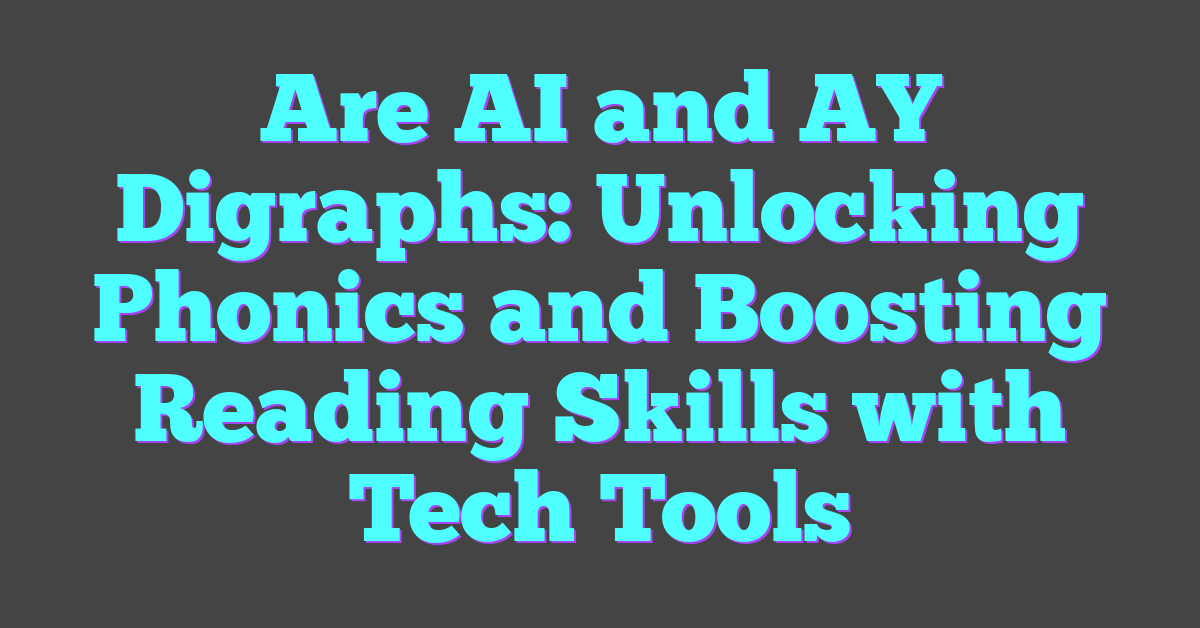Artificial Intelligence (AI) has revolutionized countless industries, and the fitness world is no exception. When it comes to training, AI offers personalized workout plans, real-time feedback, and data-driven insights that can take anyone’s fitness journey to the next level. From tracking progress to suggesting adjustments, AI-driven tools are becoming indispensable for both beginners and seasoned athletes.
Imagine having a virtual personal trainer available 24/7, ready to tailor workouts to your specific needs and goals. Whether you’re looking to build muscle, lose weight, or improve endurance, AI can analyze your performance and adapt your regimen accordingly. It’s like having a coach who knows you better than you know yourself, ensuring you stay motivated and on track.
Understanding AI for Tren: An Overview
AI for Tren revolutionizes fitness training by leveraging sophisticated algorithms and machine learning to create personalized workout experiences.

What Is AI for Tren?
AI for Tren refers to the integration of Artificial Intelligence tools and methods into fitness training. These tools analyze data from workouts to offer individualized training programs. Metrics such as heart rate, calories burned, and exercise duration are recorded. The AI then adjusts regimens to optimize performance and achieve set goals efficiently.
The Origins and Evolution of AI for Tren
AI started impacting fitness in the early 2000s with basic tracking devices. With advancements in machine learning, AI tools became more complex and personalized. Platforms now use deep learning to understand user behavior and provide real-time feedback during workouts. Technologies like computer vision allow for accurate form correction, and predictive analytics help anticipate progress and setbacks. This evolution continues as AI systems integrate more sophisticated data analysis to refine and enhance training protocols.
Key Applications of AI in the Tren Industry
AI in the Tren industry introduces transformative opportunities to enhance daily operations and elevate safety standards. Here are the key applications:
Enhancing Operational Efficiency
AI optimizes operational efficiency by analyzing vast amounts of data and providing actionable insights. Machine learning algorithms detect patterns in usage statistics, maintenance records, and operational workflows to predict and prevent disruptions. For example, predictive maintenance alerts operators to potential equipment failures before they occur, reducing downtime and extending the lifespan of machinery. Automated scheduling systems, driven by AI, streamline task assignments and resource allocation, ensuring optimal productivity and minimal waste.
Improving Safety and Security Measures
AI enhances safety and security measures, significantly reducing risks. Computer vision technologies, integrated with AI, monitor real-time footage to detect and flag potential hazards or unauthorized activities. For example, AI-powered surveillance systems can identify unsafe behaviors or equipment malfunctions, prompting immediate interventions. Additionally, AI-driven biometric systems for access control enhance security by ensuring that only authorized personnel gain entry to sensitive areas. In emergency situations, AI systems can facilitate faster response times by predicting potential incident outcomes and suggesting the most effective action plans.
AI for Tren continues to innovate, pushing the boundaries of what’s possible in operational efficiency and safety.
Technological Innovations in AI for Tren
Advances in AI for Tren, driven by innovations in machine learning and data analytics, continue to shape the industry, enhancing efficiency and safety.
The Role of Machine Learning and Data Analytics
Machine learning algorithms analyze vast datasets from Tren operations, identifying patterns and improving predictive maintenance. These algorithms forecast potential system failures based on historical data, reducing downtime and maintenance costs.
Data analytics enhances operational efficiency by optimizing routes and schedules. Algorithms assess passenger flow and environmental conditions, recommending adjustments to maintain optimal service. For example, Tren operators can adjust departure times in response to real-time passenger data, minimizing delays and overcrowding.
Future Trends in AI Technologies for Tren
Emerging trends include the integration of IoT sensors with AI systems. These sensors collect real-time data from Tren components, allowing AI algorithms to predict maintenance needs more accurately.
AI-driven automation is another trend, with autonomous trains improving safety and efficiency. Advanced AI models ensure precise navigation and emergency response, reducing human error.
Adopting AI-powered biometric systems enhances security measures. Using facial recognition and behavior analysis, these systems identify potential threats quickly, ensuring passenger safety.
Challenges and Considerations
When implementing AI in the Tren industry, several challenges and considerations must be addressed.
Addressing Privacy and Ethical Issues
Privacy and ethics play crucial roles in AI adoption for Tren operations. Collecting and processing large volumes of data, including personal information from passengers, poses significant privacy concerns. Ensuring data is anonymized and secured becomes essential. Organizations must comply with regulations like GDPR in Europe and CCPA in California. Ethical considerations include ensuring transparency in AI algorithms to avoid biases and discrimination. It’s important to involve stakeholders in developing ethical guidelines for AI usage in Tren systems.
Overcoming Technical Barriers
Technical barriers often hinder the full potential of AI in the Tren industry. Legacy systems and outdated infrastructure can limit the integration of modern AI technologies. Upgrading these systems necessitates significant investment and downtime. Data quality is another major concern. Inconsistent or incomplete data can impair AI model performance. Additionally, training AI models require substantial computational resources and expertise in machine learning, which may not always be readily available in the industry. Addressing these technical challenges requires a strategic approach involving investment in newer technologies and specialized training for personnel.
Conclusion
AI for Tren is revolutionizing the industry by making operations more efficient and safer. With advancements in machine learning and data analytics, the Tren sector is witnessing significant improvements in predictive maintenance, operational optimization, and security measures. As technology continues to evolve, the integration of IoT sensors and AI-driven automation promises even greater enhancements. However, it’s crucial to address privacy and ethical concerns while overcoming technical challenges to fully harness AI’s potential. Embracing these innovations will undoubtedly shape a smarter and more secure future for Tren operations.
Frequently Asked Questions
How has AI transformed the fitness industry?
AI has revolutionized the fitness industry by offering personalized workout plans and tailored insights. It uses data analysis and predictive capabilities to provide customized fitness advice, ensuring more effective and efficient training regimes.
What is AI for Tren?
AI for Tren refers to the use of artificial intelligence in the Tren industry to enhance various operations. This includes personalized workout plans, operational efficiency, predictive maintenance, and improved safety through biometric systems and computer vision.
How does AI improve operational efficiency in the Tren industry?
AI improves operational efficiency in the Tren industry by analyzing vast datasets and employing predictive maintenance. This ensures that maintenance schedules and operational routes are optimized, minimizing downtime and enhancing service reliability.
What role does computer vision play in Tren safety measures?
Computer vision enhances Tren safety by providing real-time monitoring and detection of potential hazards. It can identify security threats, ensure regulations compliance, and monitor passengers’ biometric data for improved security measures.
What are some future trends in AI for Tren?
Future trends in AI for Tren include integrating IoT sensors for accurate maintenance predictions, AI-driven automation for operational efficiency and safety, and advanced biometric systems for enhanced security.
What challenges are associated with implementing AI in Tren operations?
Challenges in implementing AI in Tren operations include privacy and ethical issues like data anonymization and regulatory compliance, and technical barriers such as legacy systems, data quality, and the need for specialized training and investment in new technologies.
How does predictive maintenance work in the Tren industry?
Predictive maintenance in the Tren industry utilizes machine learning algorithms to analyze datasets and predict when maintenance is needed, reducing unexpected downtime and ensuring operations run smoothly.




